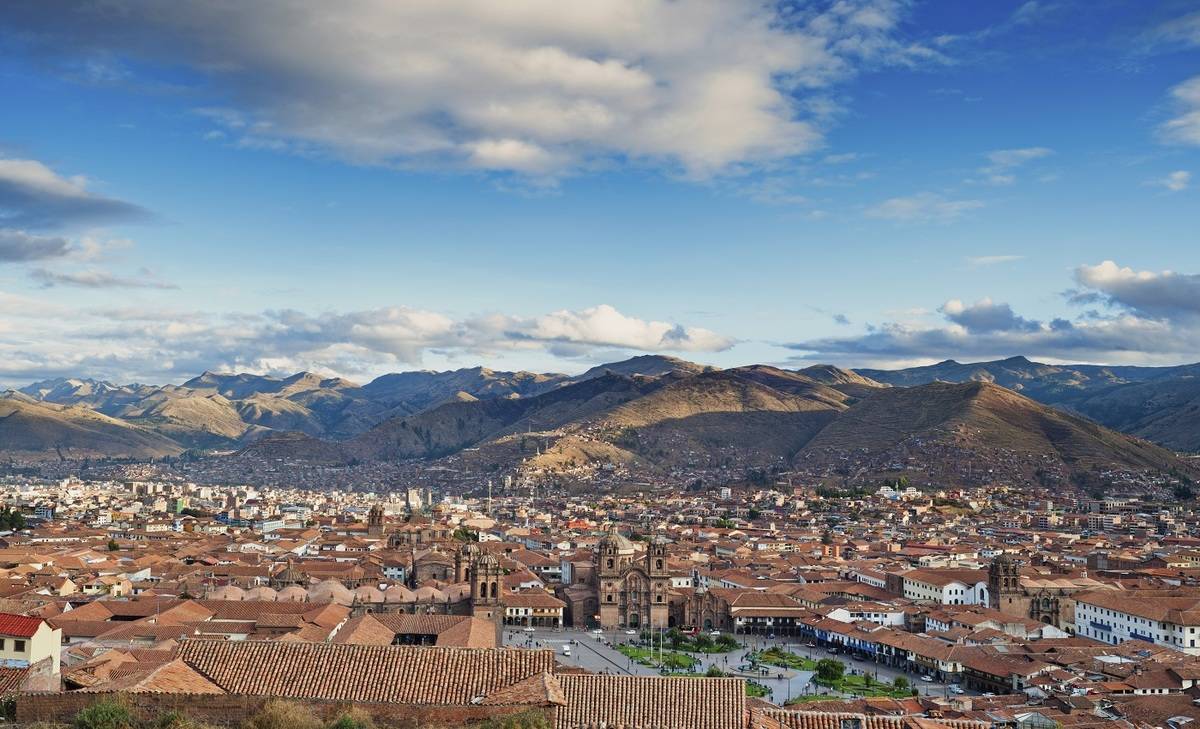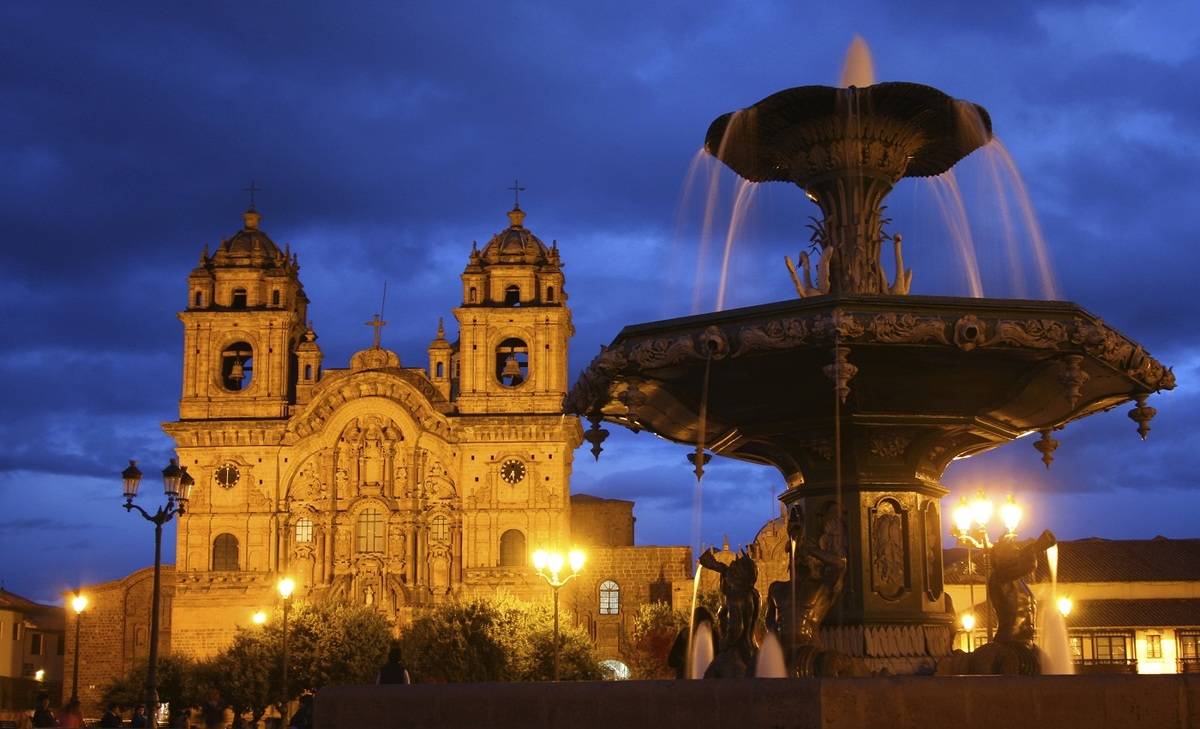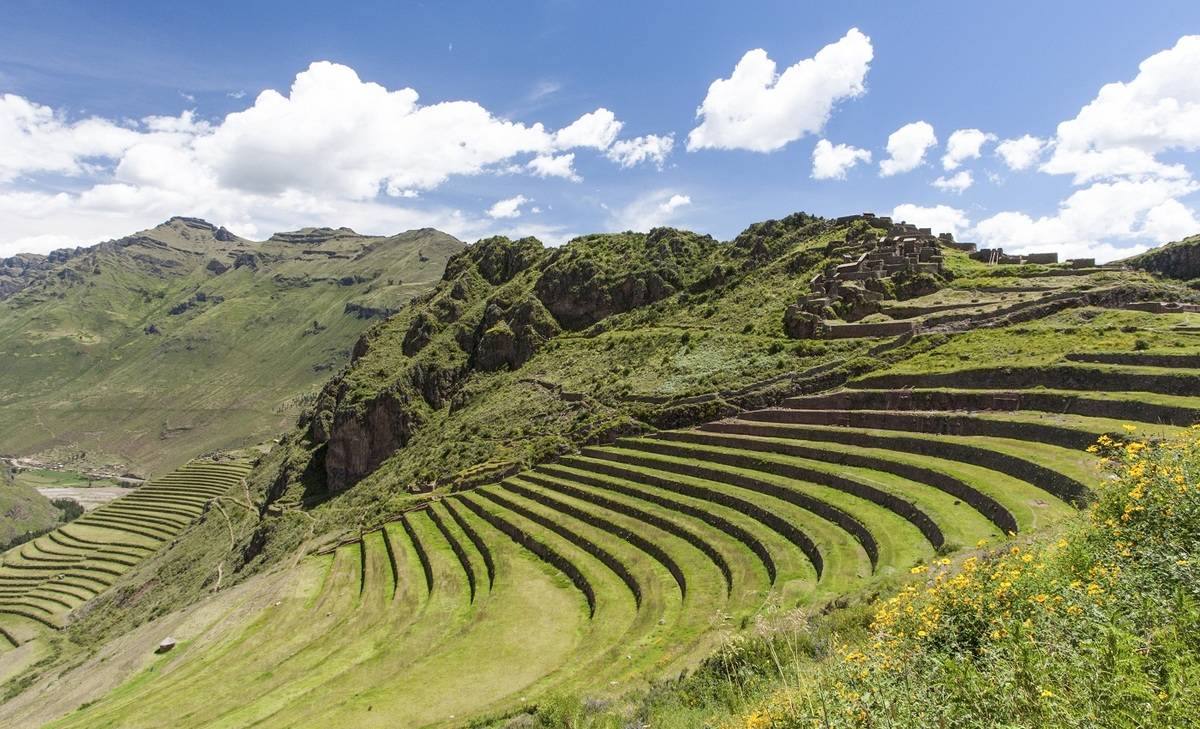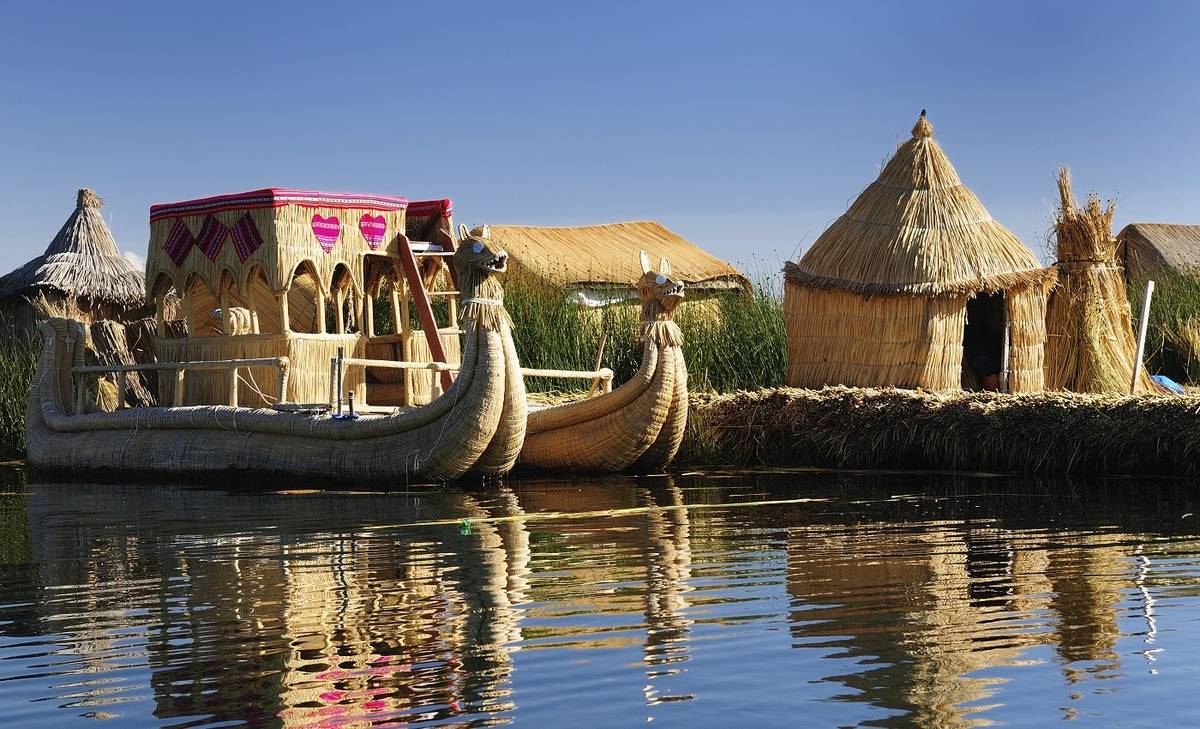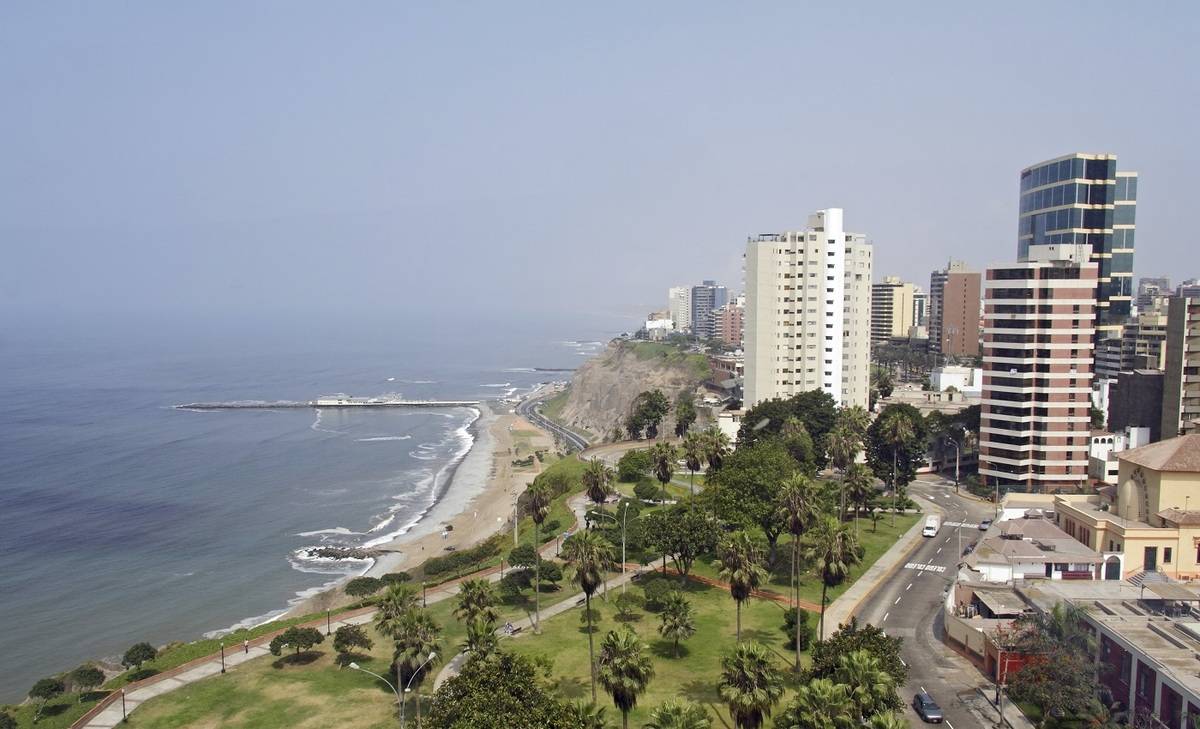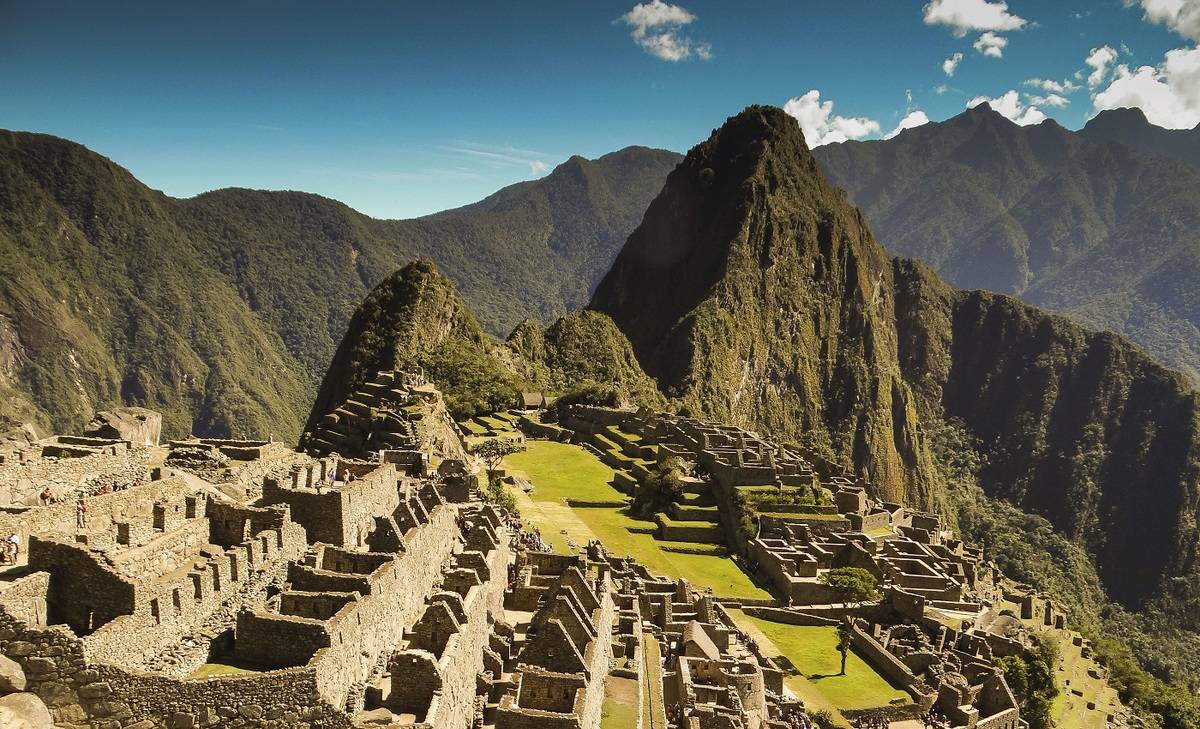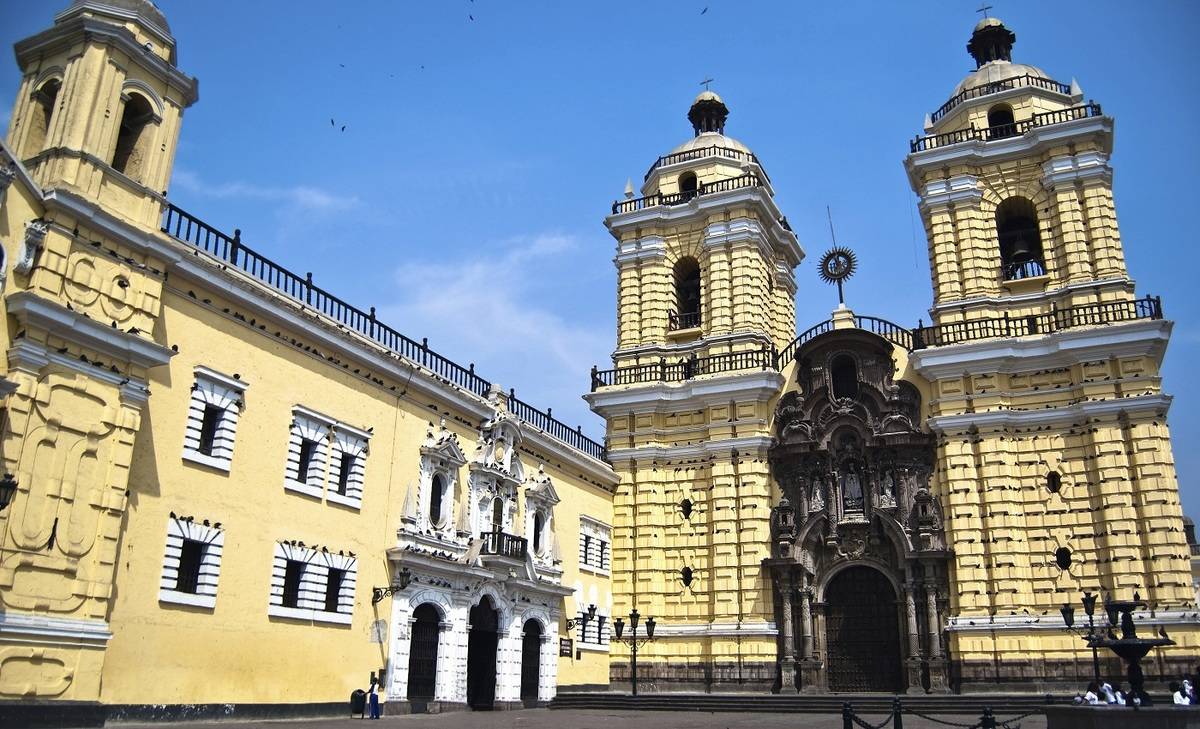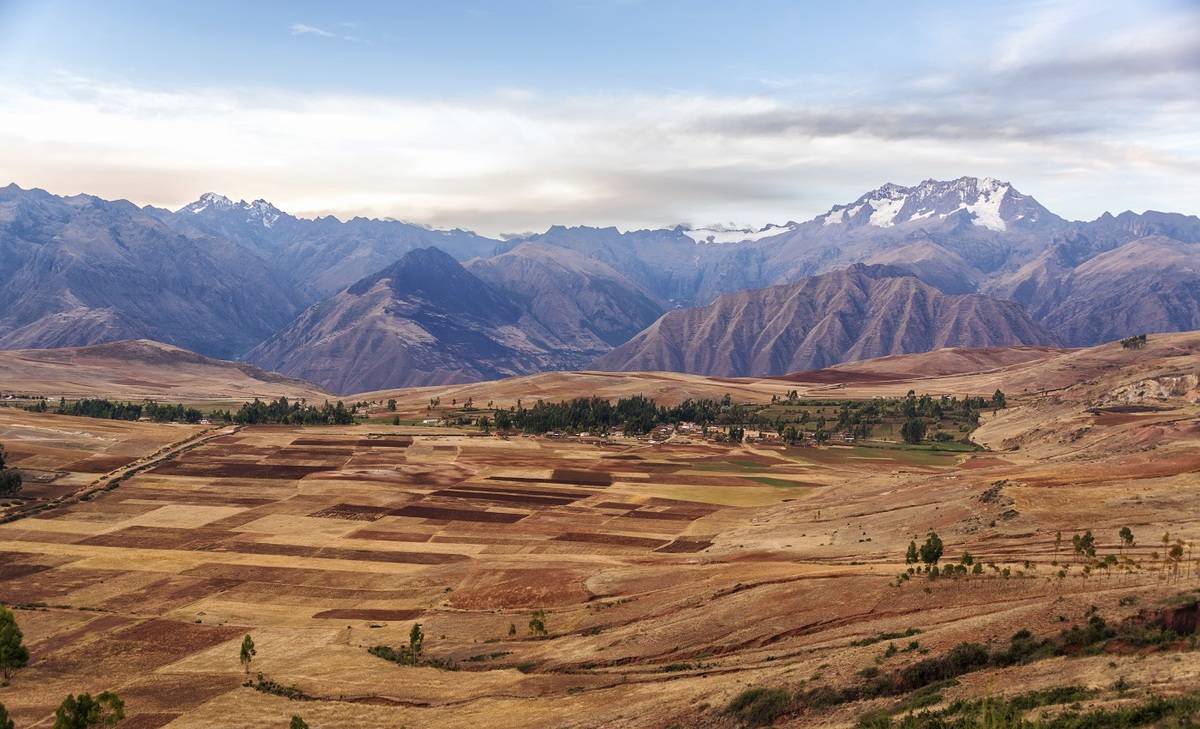Galapagos Hawk: Peru and Galapagos
15 Days
This is an inspirational group tour which includes some of the continent's most breath-taking highlights. The welcoming smiles of the Peruvian people, combined with the country's rich human culture, past and present, alongside the diverse and hauntingly beautiful landscapes make it an easy place to fall in love with. Survey the Inca temples of Machu Picchu, colonial Cusco, the bucolic splendour of Sacred Valley and Lake Titicaca's vast expanse of shimmering waters.

Home » Galapagos Hawk: Peru and Galapagos
Itinerary Highlights
- Bird watching in the Galapagos
- Snorkelling in the Galapagos
- Wildlife watching in the Galapagos
- Visit Lake Titicaca's floating Islands
- Visit Sacsayhuaman Inca fortress
- Walking tour of Cusco
- Explore Sacred Valley of the Incas
- Tour of Guayaquil
- Guided tour of Machu Pichhu
Itinerary in Brief
- Day 1: Arriving Lima, Peru
- Day 2: Fly to the Inca capital of Cusco
- Day 3: Tour of Cusco and nearby archaeological sites
- Day 4: Excursion to the Sacred Valley of the Incas
- Day 5: By rail to Machu Picchu
- Day 6: Optional re-entry to the ruins; return to Cusco by rail and road
- Day 7: Private road journey to Lake Titicaca
- Day 8: Boat trip to the Uros Islands and tour of Sillustani
- Day 9: Fly back to Lima
- Day 10: Fly to Guayaquil; guided city tour
- Day 11: Fly to the Galapagos Islands
- Day 12-14: Cruise through the archipelago
- Day 15: Fly to Guayaquil and departure
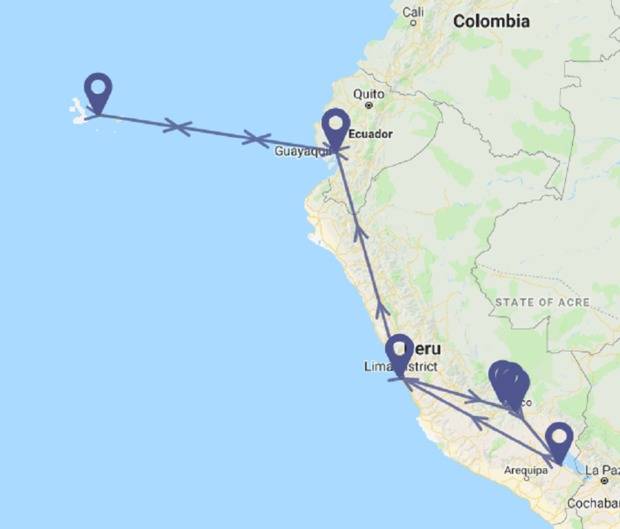
Day 1: Arriving Lima, Peru
Those passengers arriving on an international flight will be met at the airport by the tour leader or a local representative who will escort you to the hotel. The scenes from your window on the half-hour drive to the hotel through Lima encapsulate the invigorating bustle of a modern-day Latin American capital.
Lima, the City of Kings, was once the capital of Spanish America, and the vestiges of its glorious past can still be seen in the faded grandeur of the colonial churches and traditional wooden balconies in the city centre. The explosive growth of the last 50 years, so typical of capital cities in the developing world, has transformed Lima into a dynamic and chaotic low-rise city of over 6 million people. In crowded streets, throngs of traffic race out towards Miraflores, a modern middle-class suburb on the coast, where your hotel is located. You'll have time to explore in more depth on the final day of the Peruvian leg of your trip.
Day 2: Fly to the Inca capital of Cusco
A flight of just an hour takes you to Cusco. The name Cusco derives from the Quechua word for navel, indicating its location at the centre of the Inca Empire, which reached its zenith at the same time as England was fighting the War of the Roses. Today its many impressive original Inca walls display extraordinary craftsmanship, while the bustling squares are dotted with ornate baroque colonial churches. It’s a vivacious city, where shoeshine boys and postcard sellers jostle for your attention in cobbled streets lined with handicraft shops and cafés. In the evening, the town centre fills with people flocking to the many restaurants, bars and cafés.
Day 3: Tour of Cusco and nearby archaeological sites
Today an experienced guide gives you a half day tour of the city. You visit Q’oricancha, once the principal Inca Sun Temple, with extraordinarily intricate stonework, and then explore the colossal zigzag walls of Sacsayhuamán, brooding on a hillside above Cusco. In 1536 a desperate and defining three-day battle was fought between the Spaniards and the Incas around this fortress. The first conquistadors to see it were awestruck, and centuries later it is still an extraordinary and imposing sight.
There is also free time to explore Cusco; to wander through its cobbled streets bracketed by impressive Inca walls, to explore its colourful, bustling markets and splendid churches, and to stop at some of the many excellent cafés.
Day 4: Excursion to the Sacred Valley of the Incas
Today, head out from Cusco over the high plains and descend to explore the fertile Sacred Valley of the Incas. Once the bread-basket of the Inca Empire, it was heavily populated in imperial times and scores of archaeological sites remain, where well-preserved ruins bear witness to the highly developed society that the Incas created. The drive passes through or close to several of the villages and temple fortresses which pepper the valley.
The Pisac complex, set high above and visible from the eponymous colonial village you will visit, is built on terraces carved into the steep hillsides. The engineering and preservation are unrivalled. From the flat valley floor this intricate hillside rises up like a green staircase to the heavens.
Day 5: By rail to Machu Picchu
Travelling for just 2hrs by train from Ollantaytambo, you reach the ruins of Machu Picchu. As the river Urubamba enters its narrow gorge between thickly-forested granite hills, there is room only for a single track, which hugs the right bank and passes through hamlets that are no more than a collection of shacks beside the railway. Close to the foot of the mountain on a saddle of which the citadel was built is the bustling village of Machu Picchu (formerly known as Aguas Calientes), dedicated to serving the many visitors with artisan markets, bars and restaurants.
The majestic ruined city, reclaimed from tropical cloud forest, is reached by minibus up a sinuous road, or on foot up a near vertical rocky path. The American explorer Hiram Bingham discovered it in 1911, by which time it was completely buried beneath jungle vegetation. It is perhaps the ruins’ location, on a ridge spur amid forested peaks and above a roaring river canyon, that most ignites the imagination. You will have a guided tour of the ruins.
Fancy hiking some of the Inca Trail without interrupting your tour? We can organise for you to walk the mini Inca Trail on this day, but still, have a guided tour of the ruins and stay with the group in the evening. Please ask us for more details.
Day 6: Optional re-entry to the ruins; return to Cusco by rail and road
There is the option to return to the ruins with time to walk one of the many trails within the site itself, such as the hike to the vertiginous Inca Bridge, carved into a cliff edge. You can climb the tortuously steep Huayna Picchu mountain on the other side of the valley (please enquire with the office, as spaces are limited and it's necessary to pre-book). Your tour leader will be on hand to talk through the various walking options. In the afternoon return to Cusco, arriving in the early evening.
Day 7: Private road journey to Lake Titicaca
Travel by coach from Cusco to Puno, on Lake Titicaca, a spectacular 8 hr journey (including stops) which climbs to over 4,300m. Flanked by snow-capped peaks, the lonely road cuts its way through fields worked by men and oxen; an Andean landscape of adobe huts, and crops of corn and potato. After reaching the highest point of the journey, the bus crosses the altiplano, a large, windswept plain punctuated by occasional market towns, where bowler-hatted women tend their herds of llamas and alpacas.
Day 8: Boat trip to the Uros Islands and tour of Sillustani
Today you set out on the lake aboard a motor boat to visit the Uros Islands: gliding over the deep glacial waters on a sunny day is a definite highlight. You alight on the floating islands, constructed entirely from the lake’s tortora reeds – the same material used to build their canoes - and the ground moves almost imperceptibly beneath your feet. During severe storms, the islands may break up into smaller islets. Once devoted to fishing, the inhabitants now earn their living mainly through selling handicrafts to tourists and, while this is a unique experience, it has the air of a living museum.
In the afternoon, there’s a guided excursion to the Chullpas at Sillustani, towering stone tombs said to be the burial site of the ancient Hatun Colla chiefs. The towers are on the treeless shores of a lonely highland lake; the landscape, while unremittingly bleak, is spellbinding.
Day 9: Fly back to Lima
Take the morning flight to Lima (2 hours) where there is an optional tour of the colonial centre of the city, including the central Plaza de Armas, which is surrounded by beautiful colonial and republican buildings. There may be time to visit one of the world famous museums. That evening, from Miraflores, you can sit with a pisco sour cocktail and watch the sun set over the Pacific, and contemplate the next phase of your adventure.
Day 10: Fly to Guayaquil; guided city tour
You say goodbye to your Journey Latin America tour leader, who will take you to the airport for a morning flight to Guayaquil (2 hours). Ecuador's largest city is situated on the banks of the Río Guayas, and has gone through something of a transition in the last few years. The expanse of waterfront has been made into an outdoor architectural showpiece, and restoration work has taken place along the city's main thoroughfare and in the historical neighbourhood of Las Peñas.
A city tour will take you from the frenetic open-air market at La Bahia, and past the colonial naval shipyard to the Malecón (the waterfront promenade), Guayaquil's crowning jewel. Stroll past tropical gardens, bustling markets and cafés, and head to Santa Ana Hill and Las Peñas, a district of brightly-coloured wooden houses and ramshackle streets dating back to the 16th century. The local guide will accompany you to dinner (not included) before dropping you back at the hotel.
Day 11: Fly to the Galapagos Islands
Transfer to the airport for your flight to the Galápagos Islands (2 hrs) where you will embark on the motor yacht for your 5 day cruise around the archipelago. Once you’ve paid your national park entrance fee (currently $100USD), your naturalist guide will be waiting to take you to the quayside.
The Galápagos Islands emerged in the Pacific Ocean six million years ago following a spate of volcanic activity and, isolated from the continental mainland, have become home to unique animal and plant species. The islands were the inspiration for Charles Darwin’s theory of evolution, which formed the basis for his revolutionary book ‘The Origin of the Species’, published in 1859. Without fear of humans, they are sufficiently trusting to allow you to approach them and observe them up close.
Day 12-14: Cruise through the archipelago
The itinerary for your cruise is subject to change due to National Park rules. There are normally two landings a day to seek out the different wildlife that inhabits the islands. Below is a summary of the animals and birds that can be found on each of the islands that you visit on this journey. There will also be the opportunity to snorkel both from the islands and the boat itself, and 2 kayaks are also available for use by passengers.
Santa Cruz Island is home to the settlement of Puerto Ayora, and has the largest human population of the five inhabited islands. Some 4,000 residents are distributed between the cattle farming communities in the lush highlands and the coastal town, which is mainly dominated by tourism. Stops here take in Dragon Hill on the northwestern tip of the island, frequented by an new colony of land iguanas, the lush and verdant highlands a natural habitat for the giant tortoise and Black Turtle Cove, where rays and sharks can spotted from the comfort of a panga or kayak.
Chinese Hat is a small islet (1 sq km) located just off the south-eastern tip of Santiago Island. It is a recent volcanic cone, shaped like a Chinese hat when seen from north side. On the west it can be seen lava formations, formed under the sea and raised upward, this is why coral heads are found on the lava. This is an excellent visit for interpretation of geological features such as lava tubes and lava flows. The landscape is covered by sea lions colonies, marine iguanas and Galapagos penguins.
Genovesa Island is a favourite island for birdwatchers: red footed-booby, masked boobies, wandering tattlers, lava gulls, whimbrels Yellow-crowned, black-crowned and lava herons, with and yellow warblers can be seen in the area.
Bartolome Island has an altitude of 114 meters, from where you can observe one of the most beautiful sceneries of the Galapagos Islands such as: Volcanic cones, lunar like craters, lava fields, and the famous Toba formed pinnacle eroded by the sea. There is very little vegetation on this island. It has two breathtaking beaches where marine turtles exist and at the base of the pinnacle, as well as a very small colony of Galápagos penguins.
James Island is one of the most loved of all the islands. At Puerto Egas the shoreline is inhabited by Sally Lightfoot crabs, marine iguanas and Galápagos fur seals, towering above the white sandy coves and black lava flows. Sugar Loaf Volcano offers spectacular views from its 395m summit.
Day 15: Departure
After disembarking you fly back to Guayaquil (1.5 hours) and continue to your international flight or extension.
Suggested Accommodation
| City | Accommodation |
|---|---|
| Lima | Casa Andina Select Miraflores |
| Cusco | Casa Andina Premium Cusco |
| Sacred Valley | Hotel Pakaritampu |
| Machu Picchu | El Mapi Hotel |
| Puno | Sonesta Posada del Inca Puno |
| Guayaquil | Hotel Oro Verde |
Whats included?
- All land and domestic air transport
- Accommodation as specified
- Tours led by experienced Guide(s)
- Meals as specified with full-board in the Galapagos
- All excursions as specified
- Use of snorkelling equipment in the Galapagos
What’s not included?
- International air transportation
- International airport transfers
- Passport, visa, and immigration fees
- Airport arrival/departure taxes
- Galapagos Islands entrance fee US$100
- Transit control card US$20
- Travel protection plan
- Additional hotel nights
- Optional Excursions
- Wetsuit for snorkelling ($7USD a day)
- Alcoholic & non-alcoholic beverages
- Gratuities
- Any items not listed as included
Notes
This tour operates with a minimum of 4 and a maximum of 20 passengers.
The minimum age is 12 years.
Hotels are subject to change due to availability.
The vessel used on the Galapagos Islands is the M/Y Galapagos Sea Star.

